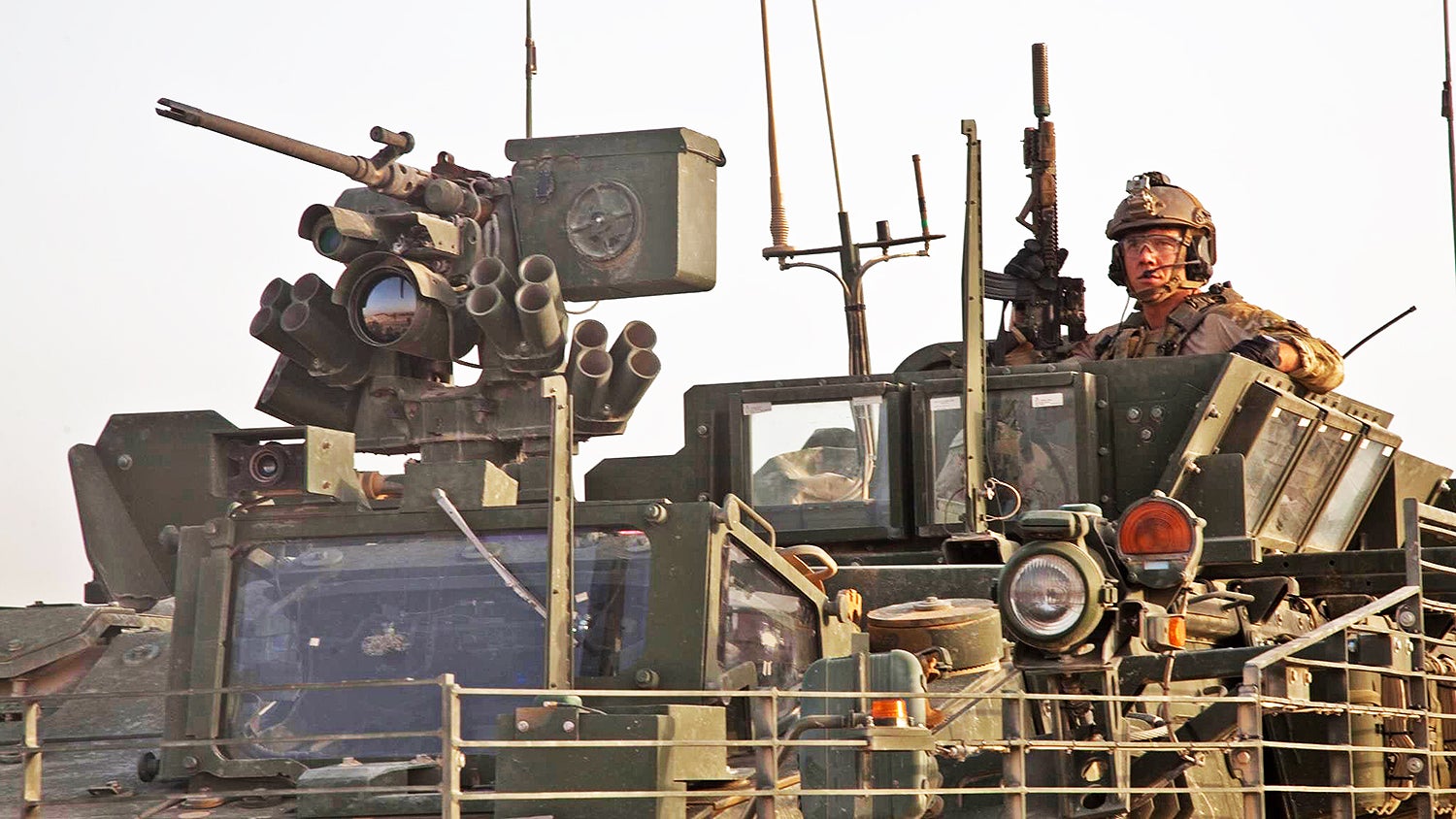Images appearing on social media today show American Stryker armored fighting vehicles in northern Syria. Deployment of these vehicles signal a large shift in force posture for US special operations forces operating alongside Kurdish and other anti-ISIS allies under the banner of Syrian Democratic Forces.
In the past, US special operations teams have been seen operating in technicals, lightly armored cars, and Humvees—not in high-tech, heavily armored fighting vehicles. Not just that, but some of the Strykers in these images appear to be unique to the US Army’s special operations community. 16 Strykers were ported over to the 75th Range Regiment over a decade ago and were outfitted for their use; these vehicles saw action at least in Afghanistan and also possibly in Iraq. Considering the Trump administration’s more aggressive foreign policy when it comes to US military engagements and fighting Islamic extremism overseas, and following a series of Syrian and Russian air strikes that appeared to target areas where US forces were operating, the sudden arrival of the much more protective and capable Strykers makes sense.
Strykers can be deployed via C-17 to relatively austere airfields. US forces in the northwestern part of Syria are known to use a number of remote airstrips and abandoned air bases to support US and SDF forces working in the region to rout ISIS. The “cages” surrounding the Stryker vehicles—also known as slat armor—have become a common accessory for armored personnel carriers, including the Stryker, following the invasion of Iraq in 2003. They are meant to defeat high-explosive anti-tank (HEAT) and other shaped-charge rounds such as those found on some RPGs that are extremely prevalent in the theatre.
This revelation comes as all eyes turn to Manbij—a town recaptured by Kurdish fighters that’s roughly a dozen miles west of the Euphrates River. It may be the Turkish military and their allied fighters’ next stop on the way to the ISIS capital of Raqqa. Turkey’s “Euphrates Shield” operation that saw troops strike out into Syria for the first time last Summer is not just aimed towards ISIS—it is also directed at YPJ and YPG fighters that are directly connected to the Kurdish Worker’s Party, also known as the PKK. Turkey sees the PKK and their militia arms as terrorists, and there is no doubt that they have been part of a bloody conflict with Turkey for decades. These are the same forces that the US actively backs and is fighting alongside in Syria, a reality that has caused great tension between the two faltering NATO allies.
Turkey has demanded that the US make Kurdish fighters pull out of Manbij and other towns west of the Euphrates River or there will be consequences. So far this hasn’t happened as the Kurdish fighters say they recaptured those towns at great cost and do not want to give them up to a power that’s overtly hostile to their existence. Clashes between Turkish and Kurdish forces have occurred sporadically in the region over the last six months, but a full-on armed confrontation has not occurred—yet. At the same time, the Assad regime, backed by Russia and Iran, see Turkey’s push into Syria as a threat to the Assad regime—one greater than that posed by Kurdish and other fighting units aligned under the Syrian Democratic Forces banner.
With all this in mind, Manbij may be a showdown of sorts between US and Turkish policy in Syria, as well as the ambitions of Assad, Russia and Iran. Now that ISIS is routed from the city of al Bab, if Turkish forces bypass Manbij and head towards Raqqa, it will signal that they have acquiesced to the Kurdish presence in Syria west of the Euphrates River, at least for now. If not, and Turkish troops move to take Manbij, the outcome could be explosive, both geopolitically and literally. There is also the problem of exactly how they will bypass the Manbij, or any towns held by Kurdish forces, on their way to Raqqa if that is where they choose to go next. From the al Monitor:
“When Turkish officials were pointing to Raqqa as their next objective, the Syrian army had not yet severed the road connection between al-Bab and Raqqa. The closure of that route left Turkey with three alternatives to reach Raqqa: Manbij, Kobani and Tell Abyad. But the Kurds and their allies control all of these locations. If Turkey insists on hitting Raqqa first, it will have to fight the Kurds and their allies.”
As for where exactly the US Strykers are in northern Syria, all signs point that they are nearby Manbij. They were photographed on the east side of the Euphrates and heading over a bridge that would take them west, to the city located just a dozen miles away. Other images show the vehicles already on the western side of Manbij and there are reports that there are already clashes between Kurdish/SDF and Turkish-backed rebels on the outskirts of the city.

UPDATE: More information on the high-profile deployment in this update.
Contact the author: Tyler@thedrive.com
